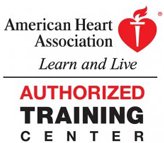CPR Seattle - AED FAQ
Q: What is an AED?
A: An AED, or Automated External Defibrillator, is a machine that can eliminate an abnormal heart rhythm in a victim of cardiac arrest.
Q: How does it work?
A: Electrode pads are placed on the victim, allowing the AED to read the electrical activity of a victim’s heart. If the AED finds a shockable rhythm, it will direct the rescuer to deliver a shock that can help to restore a normal heartbeat.
Q: Who invented AEDs?
A: While many physicians and researchers have contributed to the development of defibrillation, historically speaking, in the West it was an Irish professor, Frank Pantridge, who is credited with developing the "modern" portable defibrillator.
Q: How does an AED help CPR?
A: Use of an AED can greatly increase the likelihood of a victim surviving cardiac arrest. It can double the probability of survival (or more in some cases), “survival” meaning eventual discharge from hospital care.
Q: What defines an “abnormal” heart rhythm?
A: Rhythms that can be corrected by an AED are usually Ventricular Fibrillation (referred to as “VF” or “V-Fib” and Pulseless Ventricular Tachycardia (“VT” or “V-Tach”). In both cases, there is movement of the heart muscle, but the resulting rhythm does not circulate blood effectively. Eventually, these rhythms will degenerate into asystole, which is commonly known as “flatlining”. Asystole cannot be corrected with an AED.
Q: Is an AED used for everyone who needs CPR?
A: Yes. There are no exceptions for use of an AED – even if the heart rhythm can’t be shocked, the only way to know for sure is by having an AED attached so that it can analyze the victim. Use the AED in every case of sudden cardiac arrest.
Q: When is an AED used during CPR?
A: It is used as soon as it becomes available. The sooner it is used, the better chance it has to reset the heart rhythm.
Q: Can anyone use an AED, even if they aren’t trained in CPR?
A: Yes. While designed to be used by those with CPR/AED training, they can be operated by anyone. Voice prompts from the AED can guide both experienced and inexperienced users.
Q: Can I hurt someone with an AED, or shock a person that isn’t in cardiac arrest?
A: No. An AED will only deliver a shock to someone who needs it. You cannot accidentally deliver a shock.
Q: What if I use the AED and it doesn’t shock the victim?
A: That means a shock will likely not correct the heartbeat, and you should immediately restart CPR. The AED will direct rescuers to do this.
Q: Does an AED always restart the heart?
A: Unfortunately, no. There are many factors at play during cardiac arrest that will affect the outcome. But as stated, an AED should always be used.
Q: How many volts does an AED shock someone with?
A: Technically, it’s not the volts that matter, it’s the joules. Most AEDs deliver a shock between 120-200 joules, with each shock moving in an opposite direction between the pads.
Q: Can I be held legally liable in Washington state for using an AED on a victim if it doesn’t work?
A: No. Most states (including Washington) indemnify the user of an AED against civil liability. Washington state has a specific addendum to its Good Samaritan laws regarding use of an AED:
A person who uses a defibrillator at the scene of an emergency and all other persons and entities providing services under this section are immune from civil liability for any personal injury that results from any act or omission in the use of the defibrillator in an emergency setting. The immunity from civil liability does not apply if the acts or omissions amount to gross negligence or willful or wanton misconduct. The requirements of subsection (2) of this section shall not apply to any individual using a defibrillator in an emergency setting if that individual is acting as a good samaritan under RCW 4.24.300.
Q: I heard that if you put AED pads on a nitroglycerin patch, it will explode. Is this true?
A: No. Although any medicine patches should be removed before using an AED, the likelihood of a nitroglycerine patch exploding is close to impossible. This idea was based on a 1992 study concerning two patients. An episode of the Mythbusters TV show demonstrated that even high energy charges (much more than an AED delivers) failed to detonate the patch. (Incidentally, they also proved that you cannot jumpstart your car with a defibrillator either).
Q: Aren’t AEDs hugely expensive?
A: A typical AED costs around $1100 - $1400. While this may seem like a high price, AEDs function for many years, so it’s best to think of the cost a spread over the long term. Also, for a tool that can help save someone’s life, that’s really not that expensive.
Q: Can anyone own an AED?
A: Typically, yes, although specific ownership requirements vary at the state, county or city level (see King County's requirements at the "Shockingly Simple" AED registration website). Studies vary as to the effective advantage of having an AED at home, but there are no prohibitions against it. For homes with residents with elevated risk of cardiac arrest, having an AED on hand may be advantageous, especially if emergency medical services are some distance away. They may also be worth obtaining if a resident requires an implanted defibrillator but has not had it provided as of yet.
Q: Where can I get more information about purchasing an AED?
A: Call or email the CPR Seattle office – we can help guide you through the process, as well as discuss the AED options that we have available.




